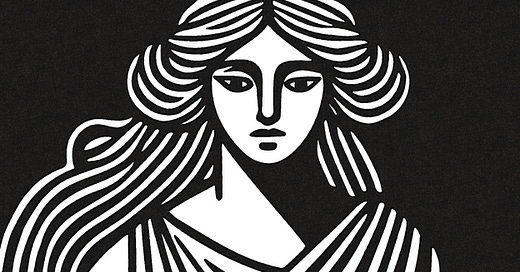Hey, myth fans, I just discovered a new book about my absolute favorite time period in human history, the Mycenaean Bronze Age (about 3,500 years ago), the first time we see the Greek language being written in Greece.
It’s called Penelope’s Bones, by Professor Emily Hauser, and it’s advertised as a fresh look at the history and culture of these times, especially from the point of view of women characters from the Iliad and the Odyssey.
I surfed around to read what others have already said about it, which gave me a lot of food for thought.
Some takeaways:
The book is an academic work with hopes for a larger audience, published by University of Chicago Press. If you are a layperson interested in Greek Mythology, be advised it isn’t a fun fiction read, but a deep dive into history, literature, anthropology, and science. Some reviewers were put off by the marketing ploy of making the book an “if-you-liked” when it really is its own thing.
A very big plus is the author’s inclusion of data from other cultures that help us to filll out what is going on in the myths. The wonderful poet A.E. Stallings writes in her Wall Street Journal review (paywall) how Hauser compares the Hittite queen Puduhepa to the queen of Troy in the Iliad, Hekabe (or Hecuba, in the Latinized version).
Some reviewers found the reconstructions of the characters from Homer’s poems to be a stretch given the available amount of information. Another Goodreads reviewer didn’t like that Professor Hauser lamented the lack of information available but then wrote plenty using what there was. Here’s the wickedly funny way she puts it, written in the satiric voice of Professor Hauser:
"Homer didn't give these female characters a voice. They only exist in the shadows, their stories buried and forgotten. Anyways! Here's this rich and nuanced portrayal of Helen's character as found in the Iliad and the Odyssey!"
More than one reviewer was excited to read the chapter on Circe, only to find it discussed the subject of pig-raising in the Bronze Age! This makes some sense, since in the Odyssey Circe magically turns Odysseus’s men into pigs. but yes, if you’re looking for a discussion of women magicians in the Bronze Age, this is apparently not the chapter for it.
Clearly, your mileage may vary. I will write more once I’ve read the actual book.




I’ve only read the chapter on Briseis, which draws on the character’s depiction in the Iliad and generalizes the hell out of it. My take on Briseis in the Iliad was understood as setup for the payoff in the Aethiopis, with the two stories together presenting a full character arc and the development of her relationship with Achilles. For me, it invalidated the entire thesis of the chapter. Even if the Aethiopis of the Epic Cycle is lost to us, we can see some bit of its reception in the Posthomerica of Quintus.